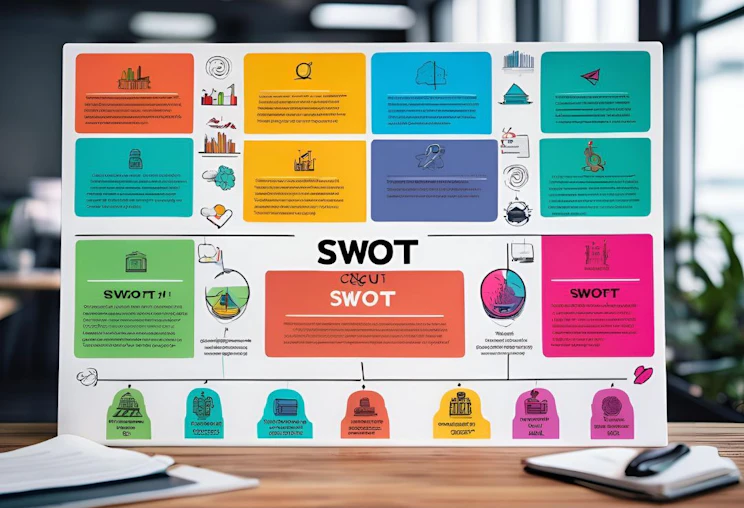SWOT

What is SWOT?
SWOT analysis examines four key elements: Strengths, Weaknesses, Opportunities, and Threats.
It is ideal for developing business strategies and is particularly effective when launching new ventures.
How to perform a SWOT
SWOT Analysis – Step 1: Identify the Four Elements
Strengths | Competitive advantages, resources, and skills that set your organization apart from others. Examples: Brand reputation, technological expertise, cost-efficient manufacturing processes. |
|---|---|
Weaknesses | Challenges, shortcomings, or areas that require improvement. Examples: Limited resources, declining customer satisfaction, lack of marketing capabilities. |
Opportunities | Positive external factors such as market growth drivers, trends, new technologies, or deregulation. Examples: Expansion of emerging markets, withdrawal of competitors, new customer needs. |
Threats | External factors that could negatively impact the business, such as intensified competition, stricter regulations, or economic downturns. Examples: Aggressive price competition, rising raw material costs, political risks. |
SWOT Analysis – Step 2: Develop Business Strategies
Combine the Strengths, Weaknesses, Opportunities, and Threats identified in Step 1 to formulate concrete business strategies.
Strengths × Opportunities (Aggressive Growth Strategy) | Leverage strengths to maximize opportunities. Example: Utilize technological expertise (strength) to enter an emerging market (opportunity). |
|---|---|
Weaknesses × Opportunities (Improvement Strategy) | Overcome weaknesses while seizing opportunities. Example: Partner with external experts to address a lack of marketing capabilities (weakness) and target new customer segments (opportunity). |
Strengths × Threats (Defensive Strategy) | Use strengths to reduce or avoid threats. Example: Leverage brand reputation (strength) to counter price competition (threat). |
Weaknesses × Threats (Risk Avoidance Strategy) | Minimize risk in areas where weaknesses and threats overlap. Example: Improve supply chain efficiency to address both limited resources (weakness) and rising raw material costs (threat). |
Finally, prioritize these strategies and translate them into actionable, executable plans.